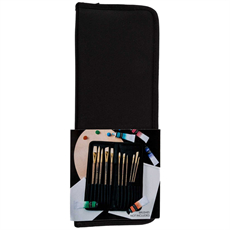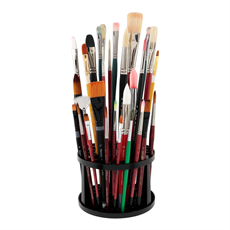Materials Needed:
- Canvas or painting surface of your choice
- Acrylic, oil, or watercolor paints (depending on your preference)
- A variety of brushes, including large, medium, and small sizes
- Palette for mixing colors
- Easel (optional)
- Inspiration or concept for your abstract piece
Step-by-Step Guide:
1. Choose Your Colors:
- Select a color palette that represents the emotions or ideas you want to convey. Expressionist art often relies on vibrant, bold colors.
2. Prepare Your Workspace:
- Set up your canvas or painting surface on an easel or flat surface, depending on your preference.
- Lay out your paints, brushes, and palette for easy access.
3. Start with a Concept or Emotion:
- Have a general idea, concept, or emotion in mind that you want to express in your abstract piece. This can serve as your guiding theme.
4. Begin with Bold Brushstrokes:
- Use large brushes to create bold, sweeping strokes on the canvas. These initial marks can set the tone for your artwork.
- Don’t be afraid to experiment with different brush shapes and sizes to achieve a variety of textures and effects.
5. Express Emotion Through Color:
- Apply your chosen colors in a way that reflects the emotions or concepts you want to convey. For example, warm colors like reds and oranges can evoke passion or energy, while cool blues and greens can convey calmness or tranquility.
6. Layer and Overlap:
- Allow the layers of paint to overlap and blend organically. This can create depth and complexity in your abstract piece.
- Use smaller brushes to add details or finer lines to your composition.
7. Embrace Spontaneity:
- Expressionist art often thrives on spontaneity and intuitive decision-making. Don’t overthink your brushstrokes; let your emotions guide your hand.
8. Experiment with Texture:
- Use a palette knife or other tools to add texture to your artwork. Scrape or build up paint to create interesting surfaces and tactile elements.
9. Step Back and Assess:
- Periodically step back from your work to assess the overall composition. Make adjustments as needed to maintain a balanced and expressive piece.
10. Allow for Drying Time: – Depending on the type of paint you’re using, allow your artwork to dry completely. This may take several hours to several days.
11. Title Your Art: – Give your abstract piece a title that reflects the emotions or concepts you intended to convey. This can provide viewers with insight into your artistic intention.
12. Display and Share: – Once your abstract artwork is complete, consider displaying it in a way that allows others to experience your expression. Share your work with others to evoke different interpretations and emotions.
Remember that abstract and expressionist art is highly subjective, and there are no strict rules. The key is to let your emotions and intuition guide your brushwork and create a piece that speaks to you and your viewers on a personal and emotional level.














